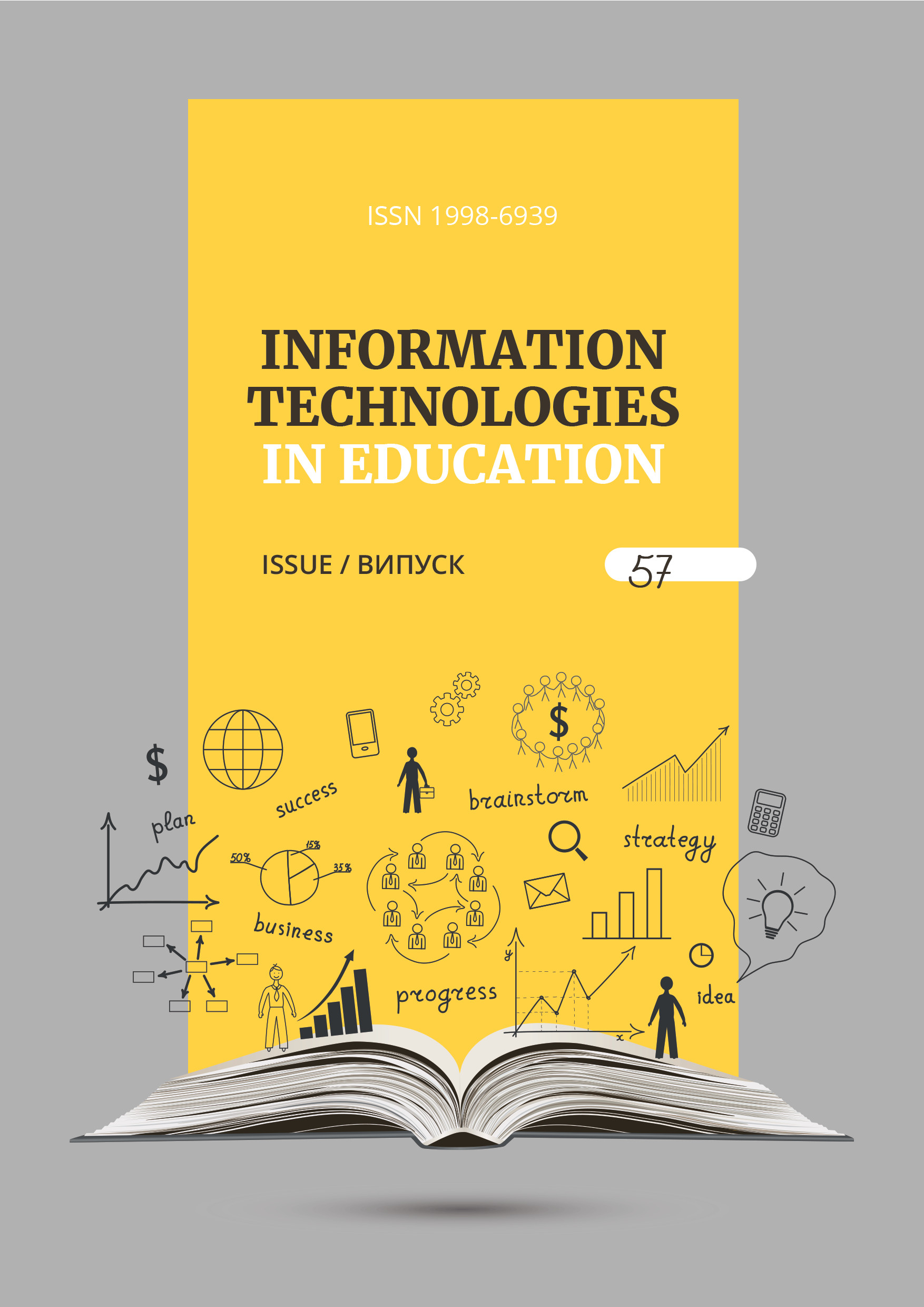TRANSFORMING INFORMATION ARCHITECTURE IN THE CONTEXT OF UNIVERSITY DIGITALIZATION
DOI:
https://doi.org/10.14308/ite000788Keywords:
digitalization, information architecture, universities, management efficiency, digital transformationAbstract
The article examines the transformation of information architecture within universities in the context of digitalization. Digital technologies have become a cornerstone of social and economic progress, with profound implications for education. As universities face increasing demands for technological innovation, the effective management of information flows has emerged as a critical factor in ensuring efficient operations and adapting to the digital economy. Despite advancements in informatization, many universities struggle with fragmented information systems, resulting in inefficient processes, data duplication, and unreliable reporting.
The study highlights the challenges posed by insufficient IT strategies, inadequate staff competencies, and underdeveloped infrastructure, which hinder the successful implementation of digital transformation. Traditional approaches to knowledge delivery, primarily reliant on the exchange of electronic documents, remain prevalent, underscoring the need for a more integrated and advanced approach. Existing systems often lack a unified vision, as departments independently develop specialized solutions that fail to interconnect, leading to inefficiencies in information management.
The article emphasizes the importance of adopting an architectural approach to reorganizing information architecture in universities. Such an approach involves a comprehensive analysis of both horizontal and vertical information flows, identifying points where information quality is compromised. By implementing a unified concept for data collection and optimizing these flows, universities can significantly enhance management efficiency. A staged development of information and analytical systems tailored to the specific needs of higher education institutions is proposed as a resource-intensive but effective solution. Figures illustrating typical and optimized information flows demonstrate the benefits of an integrated digital system. Key advantages include optimized information flows, improved interdepartmental communication, enhanced data reliability, reduced reporting errors, and increased efficiency of information systems. These improvements address the critical gaps left by fragmented informatization efforts and prepare universities to better meet the demands of the digital economy.
The study concludes that successful digital transformation in universities requires not only the adoption of advanced technologies but also a holistic restructuring of information architecture. This approach fosters improved collaboration across departments, reduces inefficiencies, and enhances the overall resilience of the educational system. To achieve these outcomes, universities must prioritize the development of tailored digital transformation strategies, invest in adequate IT infrastructure, and ensure continuous professional development for staff. These measures will enable universities to align their operations with the dynamic requirements of the digital era, ultimately driving innovation and sustainable growth.
Downloads
Metrics
References
Kolodinska, Ya. O., Skliarenko, O. V., Nikolaievskyi, O. Iu. (2022). Praktychni aspekty rozrobky innovatsiinykh biznes idei z vykorystanniam tsyfrovykh servisiv [Practical aspects of developing innovative business ideas using digital services]. Ekonomika i upravlinnia, 4, 53–60 (in Ukrainian).
Yahodzinskyi, S. (2023). Anthropomorphic information networks and converging technologies: challenge to humanity (vs), step forward?. Artificial intelligence, 1, 29–35. DOI: https://doi.org/10.15407/jai2023.01.029 (in English).
Skliarenko, O. V., Yahodzinskyi, S. M., Nikolaievskyi, O. Iu., Nevzorov, A.V. (2024). Tsyfrovi interaktyvni tekhnolohii navchannia yak nevidiemna skladova suchasnoho osvitnoho protsesu [Digital interactive learning technologies as an integral part of the modern educational process]. Innovatsiina pedahohika, 68 (2), 51–55. DOI: https://doi.org/10.32782/2663-6085/2024/68.2.51 (in Ukrainian).
Khomenko, O. O., Paustovska, M. V., Onyshchuk, I. A. (2024). Vplyv interaktyvnykh tekhnolohii na protses navchannia i rozvytok zdobuvachiv vyshchoi osvity [The impact of interactive technologies on the learning process and development of higher education students]. Naukovi innovatsii ta peredovi tekhnolohii, 5 (33), 1222–1231. DOI: https://doi.org/10.52058/2786-5274-2024-5(33)-1222-1231 (in Ukrainian).
Bobro, N. (2023). Effectiveness of artificial intelligence usage in the educational process. Science and technology today, 14 (28), 168–174. DOI: https://doi.org/10.52058/2786-6025-2023-14(28)-168-174. (in English).
Robots, artificial intelligence, and the future of work. In Greenberg, M. R., & Schneider, D. (2019). Environmental Health and the US Federal System: Sustainably Managing Health Hazards (in English).
Kubiv, S. I., Bobro, N. S., Lopushnyak, G. S., Lenher, Y. I., & Kozhyna, A. (2020). Innovative potential in European countries: analytical and legal aspects. International Journal of Economics and Business Administration. 8(2), 250–264. DOI: https://doi.org/10.35808/ijeba/457 (in English).
Downloads
Published
How to Cite
Issue
Section
License
Copyright (c) 2025 Natalia Bobro

This work is licensed under a Creative Commons Attribution-NonCommercial-ShareAlike 4.0 International License.
This work is licensed under a Creative Commons Attribution-NonCommercial-ShareAlike 4.0 International License.






























